28 Authentic Chinese Chicken Dishes Every Food Lover Needs
Chinese chicken dishes represent a vibrant culinary landscape where flavor, technique, and tradition intertwine seamlessly.
Ancient cooking methods transform simple ingredients into extraordinary meals that tantalize taste buds.
Regional influences shape these delectable preparations, highlighting the remarkable diversity of Chinese gastronomy.
Skilled chefs combine aromatic spices, delicate sauces, and precise cooking techniques to elevate chicken into something truly spectacular.
Each recipe tells a story of cultural heritage, reflecting generations of culinary wisdom passed down through families.
Textures range from crispy and crunchy to silky and tender, offering incredible sensory experiences.
These dishes showcase the incredible depth and complexity of Chinese cuisine, inviting you to savor each unique bite.
Here are 28 signature Chinese chicken dishes that will revolutionize your understanding of flavor:
Signature Chinese Chicken Dishes Bursting with Flavor
Chinese chicken dishes come alive with rich sauces, crisp vegetables, and vibrant spices. Family feasts and restaurant menus are full of beloved recipes to explore.
Crispy Fried Chicken (Zhaziji)
Crispy fried chicken embodies Cantonese culinary mastery through its unique double-cooking technique that transforms ordinary poultry into an extraordinary delicacy.
Chefs first steam chicken with aromatic spices like cinnamon, Sichuan pepper, ginger, anise, and nutmeg to infuse deep flavor and tenderize the meat.
After steaming, the chicken dries completely before deep-frying, creating an incredibly crisp exterior that shatters with each bite while maintaining succulent inner meat.
Chinese wedding feasts frequently feature this signature dish, which traditionally gets served during evening meals.
Sugar and vinegar drizzle over the finished chicken, enhancing its crispiness and adding subtle sweet-tangy notes.
Regional techniques vary slightly, but the core method remains consistent across Cantonese kitchens.
Generations have perfected this technique, passing down secrets from one cook to another.
Restaurants and home cooks alike celebrate this iconic preparation that elevates simple chicken into a memorable culinary experience.
Chongqing Chicken (Laziji)
Chongqing chicken erupts with fiery Sichuan flavor, featuring bite-sized chicken pieces buried under a volcanic landscape of dried red chili peppers.
Sichuan province originated this intensely spicy dish that delivers extreme heat through deep-fried chicken marinated in bold seasonings.
Ginger and garlic enhance the meat's complex flavor profile during quick stir-frying.
Diners navigate the chili-laden plate by selecting chicken pieces with chopsticks while carefully avoiding the overwhelming number of peppers.
Traditional preparation involves chopping chicken on the bone into small segments before deep-frying.
Restaurant and home cooks carefully balance the meat-to-pepper ratio, ensuring maximum spiciness.
Intense red color signals the dish's signature heat and regional culinary style.
Authentic versions showcase Sichuan's reputation for creating explosively spicy cuisine.
Kung Pao Chicken (Gong Bao)
Kung pao chicken captures Sichuan cuisine's bold spiciness through a fiery stir-fry combining diced chicken, crunchy peanuts, and numbing Sichuan peppercorns.
Named after Ding Baozhen, a 19th-century government official whose life was saved by a stranger, this dish emerged from a personal connection and gratitude.
Originating in China's Sichuan province, the recipe blends complex flavors with tender chicken pieces and crisp vegetables.
Spicy and savory notes dance together, creating a balanced meal that tingles the palate.
Western Chinese restaurants popularized kung pao chicken, transforming it into a global favorite.
Restaurant menus worldwide now feature this iconic dish, showcasing its widespread appeal.
Sichuan peppercorns provide a unique numbing sensation that distinguishes kung pao from other stir-fry recipes.
Orange Chicken (Chen Pi Ji)
Orange chicken blends American and Chinese culinary traditions into a crispy, tangy masterpiece of deep-fried chicken coated in a zesty orange-chili sauce.
Panda Express popularized this dish as a sweeter version of the original Hunan-style recipe from Southern China.
Restaurant chefs developed the recipe by batter-frying chicken pieces and coating them in a glossy orange-infused sauce with subtle heat.
Subtropical regions of China inspire the dish's citrus flavors, leveraging the area's abundant orange and tangerine crops.
Sweet and sour notes characterize the sauce, which balances crispy chicken with bright, punchy flavors.
Americans embraced this fusion dish as a staple in Chinese-American cuisine.
Steamed rice typically accompanies the chicken, creating a complete meal.
Restaurants across the United States now feature orange chicken as a popular menu item.
Soy Sauce Chicken (See Yao Gai)
Soy sauce chicken embodies Cantonese culinary mastery through its signature red cooking method, transforming simple chicken into a mouthwatering delicacy simmered in rich soy sauce-based liquid.
Cantonese chefs expertly braise chicken quarters until meat becomes incredibly tender and falls effortlessly from bones.
Chinese families traditionally serve this dish during New Year celebrations, highlighting its cultural significance.
Restaurants and home kitchens prepare the chicken by slow-cooking it in a complex blend of seasonings that infuse deep umami flavors.
Ginger, onions, and chicken stock create a complementary dipping sauce that enhances the meat's savory profile.
Small chicken pieces like legs and drumsticks work equally well in this preparation.
Diners typically enjoy the dish alongside steamed rice or stir-fried lo mein noodles.
Salt and aromatics complete the chicken's nuanced flavor spectrum, making each bite a celebration of Cantonese cooking techniques.
Lemon Chicken (Ling Moong Gai)
Ling moong gai exemplifies Southern Chinese culinary precision with its zesty lemon-infused chicken preparation method.
Southern Chinese regions developed this signature dish featuring tender chicken quarters marinated in a complex sauce blend.
Soy sauce and fresh lemon zest create a tangy flavor profile that distinguishes this recipe from standard chicken dishes.
Sesame oil adds depth and richness to the marinade, complementing the bright citrus notes.
Ginger provides subtle warmth and aromatic complexity to the overall taste experience.
Cornflour helps thicken the sauce, ensuring each chicken piece remains perfectly glazed.
Scallions contribute a fresh, mild onion undertone to balance the intense flavors.
Sugar rounds out the sauce, creating a subtle sweet-savory harmony that makes ling moong gai a memorable meal.
General Tso’S Chicken (Zuo Zongtang Ji)
General Tsos chicken revolutionizes American Chinese cuisine with its crispy deep-fried chicken pieces coated in a zesty sweet-spicy sauce.
Originating from immigrant chef interpretations, this dish features tender chicken dices expertly fried and stir-fried with aromatic ginger, garlic, and hot chili peppers.
Despite its name, the recipe bears no authentic connection to General Tso Tsungtang, a prominent Qing dynasty statesman.
Taiwanese and Chinese immigrant chefs both claim creating this popular restaurant menu item in the United States.
Restaurants across America serve this vibrant dish with signature sauce blending sugar, soy sauce, rice vinegar, and rice wine.
Subtle hints of scallions add fresh complexity to each bite.
Regional variations showcase slight differences in sauce intensity and spice levels.
Large metropolitan areas particularly embrace this flavorful culinary fusion.
Honey-Soy Braised Chicken Wings (Mut Jup Mun Gai Yik)
Mut jup mun gai yik showcases Guangzhou's bold flavor combinations through tender chicken wings steeped in a glossy, sweet-savory sauce.
Cantonese cuisine crafts this appetizer by stir-frying wings in peanut oil until golden brown and crisp.
Shaoxing wine and honey blend seamlessly with soy sauce, creating a rich glaze that caramelizes around each wing.
Garlic and ginger add sharp, aromatic undertones to the dish's complex profile.
Home cooks marinate the chicken to intensify the flavor before rapid wok cooking.
Traditional preparation involves high-heat searing followed by slow simmering to ensure maximum tenderness.
Wings emerge glistening with a dark, sticky coating that balances sweet and umami notes.
Guangzhou restaurants often serve these wings warm as a popular starter that reflects the region's sophisticated culinary techniques.
Galinha A Africana
Galinha a Africana is a fiery Portuguese-African chicken dish originating in Macau, blending culinary traditions from multiple regions.
Portuguese colonizers introduced this spicy barbecue specialty featuring chicken coated in a complex sauce of peanuts, coconut milk, paprika, grated coconut, and shallots.
Historical accounts suggest chef Americo Angelo first created the dish by combining ingredients from African Portuguese colonies.
Macau's unique cultural heritage influenced its development, with some believing Portuguese families initially crafted the recipe.
Barbecue techniques and spice combinations reflect the cross-cultural exchanges of colonial periods.
Grilling transforms the chicken into a crispy, flavor-packed meal.
Regional spices and cooking methods make galinha a Africana a testament to multicultural culinary creativity.
Macanese cuisine continues to celebrate this distinctive chicken preparation as a symbol of historical fusion.
White Cut Chicken (Bai Qie Ji)
White cut chicken represents a classic Cantonese delicacy featuring perfectly poached tender chicken bathed in aromatic herbs and spices.
Originating from Southern China, this dish celebrates simple cooking techniques that preserve meat's natural flavors and textures.
Cooks carefully boil chicken in a fragrant broth of green onions, ginger, cooking wine, Sichuan peppercorns, and sesame oil.
Immediately after cooking, chefs rapidly cool the chicken in ice water to maintain its smooth, silky texture.
Traditional preparation involves serving the whole chicken, including head and feet, which symbolizes completeness in Chinese culture.
Ginger scallion sauce and chili sauce accompany the dish as complementary dipping condiments.
Chinese families especially enjoy white cut chicken during festivals and holidays like Chinese New Year.
Minimal seasoning and precise cooking techniques highlight the chicken's pure, delicate flavor profile.
Wenchang Chicken (Wenchang Ji)
Wenchang chicken embodies China's most celebrated poultry specialty, originating in Hainan's Wenchang city during the Ming Dynasty.
Royal recognition elevated these distinctive chickens after an official presented them to the emperor as a prized gift.
Special chickens fed on coconut and peanut bran develop an exceptional flavor profile that distinguishes this regional delicacy.
Farmers carefully raise these chickens using traditional methods passed through generations.
Preparation involves gently boiling or steaming the chicken to preserve its natural tenderness and subtle taste.
Diners typically enjoy the meat by dipping pieces into a simple yet flavorful mixture of ginger and salt.
Regional spices enhance the chicken's natural aromatics without overwhelming its delicate character.
Culinary experts consider Wenchang chicken a benchmark for high-quality poultry preparation in Chinese cuisine.
Swiss Wings (Ruii Shi Ji Chi)
Swiss wings deliver an irresistible sweet-savory flavor profile blending Chinese culinary traditions with unique marinades of sugar, soy sauce, and Chinese wine.
Originating from disputed regions between Hong Kong and Guangzhou, these chicken wings feature complex spice combinations including star anise, garlic, and ginger.
Restaurants and home cooks prepare the wings by carefully marinating chicken to infuse deep, rich flavors before cooking.
Traditional preparation methods involve slow-cooking or roasting to ensure tender meat with caramelized exterior.
Authentic recipes prioritize balanced seasoning that creates a glossy, sticky coating on each wing.
Diners enjoy these wings as an appetizer or main course with steamed rice.
Restaurants across Asia frequently feature this popular dish on their menus.
Families often prepare Swiss wings during special gatherings as a crowd-pleasing protein option.
Beggar’S Chicken (Jiao Hua Ji)
Beggar's chicken represents an extraordinary Chinese culinary masterpiece originating in Hangzhou, where a whole chicken transforms into a succulent delicacy through an ingenious cooking method.
Wrapped tightly in lotus leaves and encased in clay, the chicken bakes over an open fire or in a special oven, creating incredibly tender and aromatic meat.
Historical legends suggest a starving beggar accidentally discovered this technique when lacking proper cooking tools and resources.
Innovative preparation involves covering the stuffed chicken completely in mud or clay before slow-roasting, which seals in moisture and intensifies flavors.
Restaurant servers traditionally crack open the hardened clay shell dramatically at the table, revealing the perfectly cooked meat inside.
Each stage of preparation requires precise technique and careful handling to ensure optimal results.
Rich culinary traditions highlight this dish as a testament to resourcefulness and creative cooking methods.
Modern chefs continue to honor this centuries-old recipe, preserving its unique cultural significance and remarkable taste experience.
Steamed Chicken Feet (Feng Zhao)
Feng zhao represents a delicate Cantonese dim sum delicacy featuring chicken feet transformed through a meticulous cooking process.
Chefs carefully clean and salt the feet before deep-frying them to create a puffy, caramelized exterior that enhances their texture and flavor.
Star anise and ginger infuse the feet during a slow braising method that tenderizes the skin and meat.
Simmering helps break down connective tissues, resulting in an incredibly soft and flavorful dish.
Traditional dim sum restaurants serve feng zhao as a popular appetizer or shared plate.
Diners appreciate the unique textural experience and rich, complex flavors.
Regional variations exist across different Chinese provinces, with each area adding its own subtle spice blend.
Authentic preparation requires patience and precise cooking techniques to achieve the signature crispy-yet-tender result.
Moo Goo Gai Pan
Moo goo gai pan is a savory Chinese-American stir-fry featuring tender chicken and earthy mushrooms in a silky white sauce.
Originating from Cantonese cuisine, this dish transforms simple ingredients into a flavorful meal popular in American Chinese restaurants.
Sliced chicken and button mushrooms form the core of the recipe, complemented by crisp snow peas, crunchy bamboo shoots, and water chestnuts.
Home cooks easily prepare this dish by quickly stir-frying chicken and vegetables in a light sauce made from chicken broth, soy sauce, and oyster sauce.
Shaoxing wine sometimes adds depth to the sauce's complexity.
Chinese immigrants adapted traditional recipes to American tastes, creating this mild and accessible stir-fry.
Restaurants across the United States serve moo goo gai pan as a staple of Chinese-American cuisine.
Families enjoy this balanced, protein-rich dish as a quick and satisfying meal.
Braised Chicken With Chestnuts (Ban Li Shao Ji)
Ban li shao ji represents a classic Shanghai braised chicken specialty featuring tender meat and rich chestnuts simmered in a savory sauce.
Originating in eastern China, this traditional dish combines succulent chicken with sweet chestnuts for a complex flavor profile.
Shaoxing wine and soy sauce create depth in the cooking liquid, enhancing the meat's natural taste.
Ginger and scallions add aromatic complexity to the braise.
Chestnuts provide a subtle sweetness and creamy texture that complements the chicken.
Home cooks typically prepare this dish using whole chicken pieces or select cuts like thighs.
Restaurants across Shanghai and Zhejiang serve ban li shao ji as a comforting main course.
Regional variations exist, but the core ingredients remain consistent across different kitchens.
Portuguese Chicken (Galinha A Portuguesa)
Galinha a Portuguesa delights food lovers with its unique cross-cultural origins as a Portuguese-Macanese fusion chicken dish.
Portuguese colonizers introduced Mediterranean cooking techniques to Macau, creating this signature meal blending European and Asian flavors.
Tender chicken thighs simmer in a creamy coconut milk sauce seasoned with turmeric and mild curry spices.
Soft potatoes accompany the meat, absorbing the rich, fragrant sauce.
Macau's five-century Portuguese colonial history inspired this remarkable culinary creation.
Restaurants across Portugal and Macau serve this comforting chicken dish as a testament to cultural exchange.
Coconut milk and Mediterranean spices give the dish its distinctive, smooth taste profile.
Families and restaurants celebrate this flavorful meal that bridges two distinct culinary traditions.
Tea-Smoked Chicken (Cha Xun Ji)
Tea-smoked chicken represents a sophisticated Sichuan cooking technique that transforms ordinary poultry into an aromatic delicacy through intricate smoking methods.
Oolong tea leaves, sugar, and barley create a fragrant smoking base for preparing whole chicken seasoned with ginger, sesame oil, salt, and Shaoxing wine.
Cooks carefully rub salt over the chicken, chill, rinse, and dry the meat before flattening and scoring the surface.
Traditional preparation involves smoking the chicken in a steamer using tea leaf mixtures with flour and sugar.
Gentle steaming follows the smoking process, ensuring tender meat infused with complex flavors.
Sichuan chefs meticulously control temperature and smoking time to achieve perfect texture and taste.
Regional variations might include different tea types or additional spices.
Each step requires precision to produce an authentic, aromatic dish that showcases the depth of Chinese cooking techniques.
Wind Sand Chicken (Feng Sha Ji)
Wind sand chicken brings a crispy, golden-crusted poultry experience from Hong Kong's Guangdong region.
Southern Chinese kitchens craft this beloved dish by marinating chicken pieces in a blend of sugar, salt, white pepper, and eggs.
Cornflour, plain flour, cumin, and garlic create a distinctive coating that transforms ordinary chicken into a crunchy delicacy.
Restaurant tables quickly fill with plates of this irresistible chicken, where each bite delivers a satisfying crunch and complex flavor profile.
Regional spices and careful preparation make wind sand chicken a standout street food favorite.
Restaurant patrons appreciate its simple yet robust ingredients.
Traditional cooking methods ensure a perfectly seasoned exterior.
Red Glutinous Rice Wine Chicken (Hong Zao Ji)
Hong zao ji represents a classic Fuzhou culinary specialty featuring chicken transformed by rich red glutinous rice wine's complex flavors.
Tender chicken pieces absorb an aromatic marinade of fermented red wine lees and light soy sauce before slow braising.
Ginger slices, dried day lilies, and shiitake mushrooms enhance the dish's deep umami profile.
Regional cooks carefully select high-quality ingredients to create this beloved comfort meal.
Red glutinous rice wine provides a distinctive reddish color and sweet-savory undertone to the meat.
Sesame oil adds subtle nutty richness to the final preparation.
Salt balances the wine's intensity and deepens overall seasoning.
Water helps create a smooth, silky sauce that coats each chicken morsel.
Stir-Fried Spring Chicken With Chestnuts (Lizi Chao Ziji)
Chestnut chicken represents a sophisticated Chinese comfort dish featuring tender chicken pieces infused with complex spices and sweet chestnuts.
Shaoxing wine and oyster sauce form the marinade's rich base, creating deep flavor layers for the meat.
Star anise, ginger, and cinnamon contribute warm, aromatic notes that elevate the dish's complexity.
Mushrooms and spring onions add texture and freshness to the stir-fried preparation.
Chestnuts provide a subtle sweetness that balances the savory protein.
Traditional cooking methods involve marinating chicken and quickly stir-frying ingredients in a hot saucepan.
Winter seasons highlight this warming specialty in Chinese cuisine.
Regional variations might include different spice combinations or additional vegetables.
Drunken Chicken (Zui Ji)
Drunken chicken represents a sublime Zhejiang province delicacy featuring whole chicken marinated in Shaoxing rice wine.
Fresh chicken transforms into a tender, aromatic dish through careful preparation techniques passed down through generations.
Cooks first boil the whole chicken and rapidly chill it in ice water to lock in moisture and flavor.
Traditional methods require marinating the meat in high-quality Shaoxing wine for several days, allowing deep wine absorption.
Savory and complex, this cold dish offers an elegant balance between rich chicken and fragrant wine notes.
Zhejiang province proudly claims this recipe as a regional specialty with deep culinary roots.
Restaurants and home kitchens across China serve this unique preparation as a celebrated appetizer or light meal.
Generations have enjoyed this remarkable chicken dish that showcases the sophisticated simplicity of Chinese cooking traditions.
Ghost Chicken (Gui Ji)
Ghost chicken emerges as a zesty Yunnan salad featuring black-skinned chicken shredded and seasoned with an aromatic herb blend.
Local cooks carefully boil the distinctive black chicken until tender and perfectly shreddable.
Sand ginger, basil, coriander, Thai bird's eye chili, sawtooth herbs, and cardamom create its signature intense flavor profile.
Lime juice adds sharp brightness to the mix, balancing the herbal complexity.
Each ingredient contributes a unique element to this spicy cold dish.
Yunnan province chefs traditionally prepare this refreshing salad as a light meal or appetizer.
Regional ingredients highlight the culinary creativity of southwestern Chinese cuisine.
Herbs and chicken combine in a vibrant, cool presentation that awakens the palate.
Chasha Zemma
Chasha zemma delivers bold Tibetan chicken flavors through a spicy, crispy preparation method highlighting regional spice blends.
Tibetan cooks carefully coat chicken thighs with a complex mixture of flour, turmeric, Sechuan pepper, salt, minced ginger, garlic, and eggs.
Mountain regions inspire this traditional dish featuring layered seasoning techniques.
Chicken transforms into a golden-brown crispy protein with intense aromatic spices.
Regional ingredients like turmeric and Sechuan pepper create deep flavor profiles.
Garlic and ginger add robust undertones to the recipe.
Eggs help create a crisp exterior coating for the meat.
Onions and tomatoes frequently complement the main protein in final serving presentations.
Dry-Fried Chicken (Gan Bian Ji)
Ganbian ji stands out as a fiery Sichuan chicken dish bursting with intense spicy flavors and complex seasoning.
Bold Sichuan peppercorns and dried chili peppers create a numbing heat signature that distinguishes this classic recipe from other Chinese stir-fries.
Chicken pieces are quickly deep-fried in hot oil until golden and crispy, developing a rich caramelized exterior.
Fragrant doubanjiang (chili-bean paste) amplifies the dish's spicy profile with its deep red color and robust taste.
Ginger, garlic, and scallions add layers of aromatic complexity to the preparation.
Traditional cooking methods involve high-heat wok stir-frying to seal in flavors and create a perfect texture balance.
Salt, sugar, soy sauce, and chili oil contribute additional depth and seasoning nuances.
Regional Sichuan cuisine celebrates this dish as a spicy, complex culinary creation that exemplifies bold flavor combinations.
Oven-Roasted Spiced Chicken (Shiu Ng Heung Gai)
Shiu ng heung gai combines bold Chinese flavors with succulent roasted chicken, featuring a robust marinade of soy sauce, Shaoxing wine, garlic, and five-spice powder that infuses tender meat with deep, complex tastes.
Originating from traditional Chinese cuisine, this dish transforms simple chicken pieces into a deeply seasoned delicacy by marinating thighs, drumsticks, or wings in a rich blend of ingredients.
Peanut oil adds richness while the wine provides depth, creating a balanced profile that elevates the chicken's natural flavors.
Garlic and ginger contribute sharp, aromatic notes that complement the warm undertones of five-spice powder.
Careful preparation involves draining marinated chicken and arranging pieces in a deep roasting dish, then spooning extra marinade over the meat.
High-temperature roasting ensures a crisp, golden-brown exterior that seals in the marinade's intense flavors.
Walnut Chicken (He Tao Ji)
Chicken with walnuts embodies Shandong cuisine's bold flavor complexity through its intricate sweet-savory stir-fry technique.
Maltose syrup, rice vinegar, and yellow bean sauce create a glossy coating that transforms simple ingredients into a sophisticated meal.
Garlic browns in vegetable oil before joining chicken pieces and walnuts for rapid stir-frying.
Sugar introduces subtle sweetness while helping ingredients caramelize quickly.
Walnuts develop a golden crunch during high-heat cooking.
Traditional preparation methods ensure maximum flavor absorption through precise temperature control and strategic ingredient layering.
Shandong Roast Chicken (Shandong Shao Ji)
Shandong shaoji roast chicken stands as a legendary meat preparation from China's eastern Shandong province, featuring tender chicken methodically prepared through multiple cooking techniques.
Golden-brown chicken pieces are carefully marinated in soy sauce and vegetable oil before being expertly fried to achieve perfect color and texture.
Distinctive Sichuan pepper, fragrant scallions, and zesty ginger enhance the meat's complex flavor profile during steaming.
Chefs shred the chicken into thick, succulent strips that can be stored chilled for several days.
Traditional serving involves arranging these meat strips atop crisp cucumber slices.
Complementary sauce made from soy sauce, vinegar, garlic, sesame oil, and reserved chicken juices adds tangy depth to each bite.
Regional cooking methods ensure maximum tenderness and flavor absorption.
What Cooking Techniques Are Used in Chinese Chicken Dishes?
Chinese cuisine employs a variety of cooking methods to create flavorful and tender chicken dishes:
What Side Dishes Go Best with Chinese Chicken Entrées?
Traditional Chinese chicken meals are complemented by a variety of sides that balance flavors and textures:
Do Chinese Recipes Always Require Soy Sauce?
While soy sauce is a cornerstone of many Chinese recipes, it isn’t always a required ingredient. It’s widely used because it adds umami, saltiness, and a rich color to dishes, making it a frequent choice for marinades, stir-fries, and braised preparations.
However, some Chinese dishes rely on other seasonings such as oyster sauce, hoisin sauce, fermented bean pastes, or fresh herbs and aromatics instead of soy sauce. These alternatives contribute different layers of flavor and allow for a variety of taste experiences.
Regional differences also influence soy sauce usage. Northern Chinese cuisine often features soy sauce more prominently, while southern regions, including Cantonese cooking, tend to favor lighter, fresher flavors with less reliance on soy sauce.
Overall, while soy sauce is essential in many Chinese dishes, it is not universal, which contributes to the rich diversity found across Chinese culinary traditions.

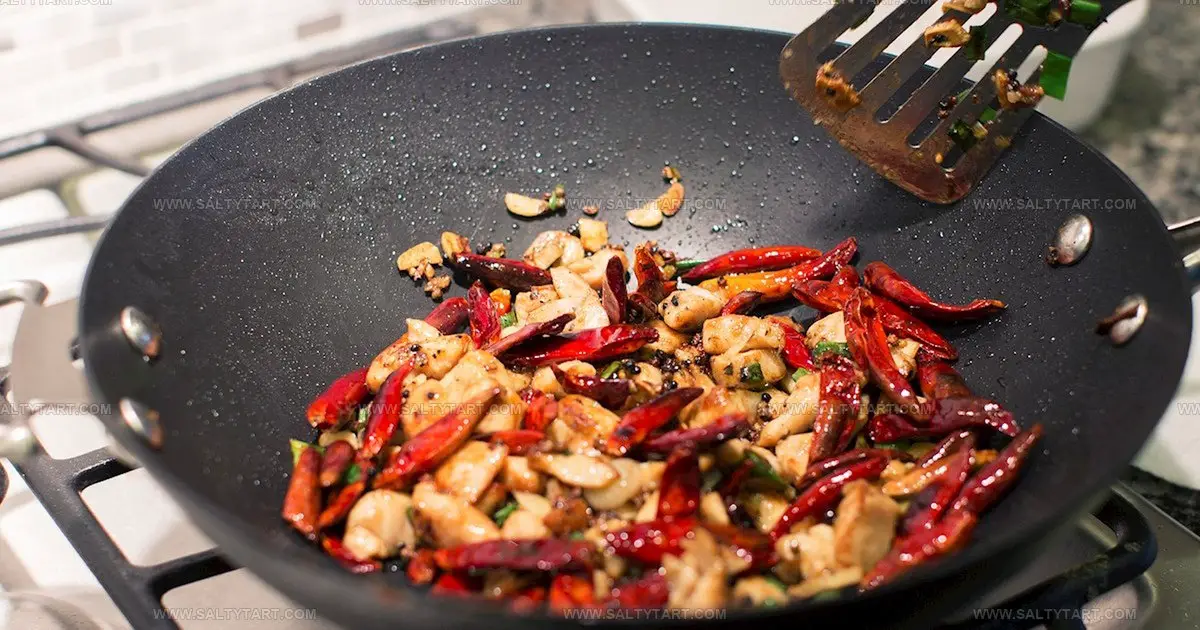
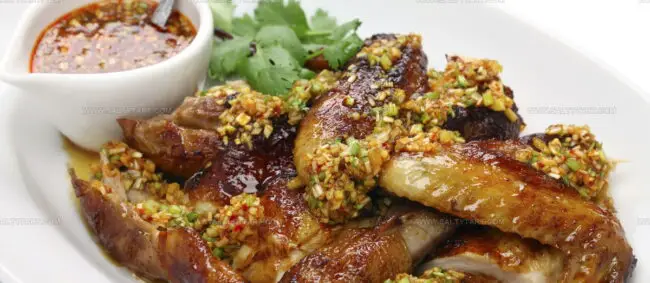


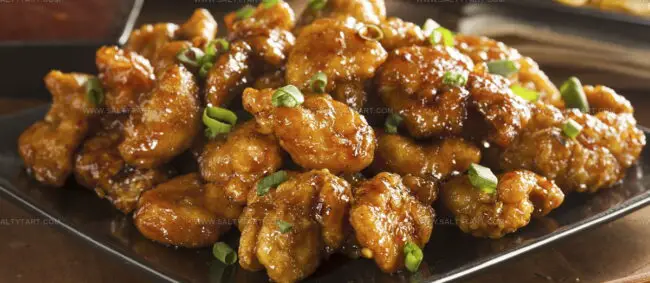
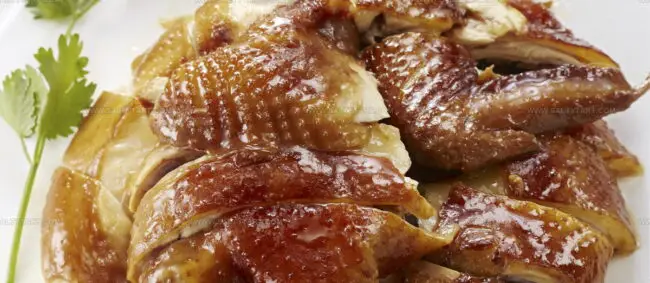
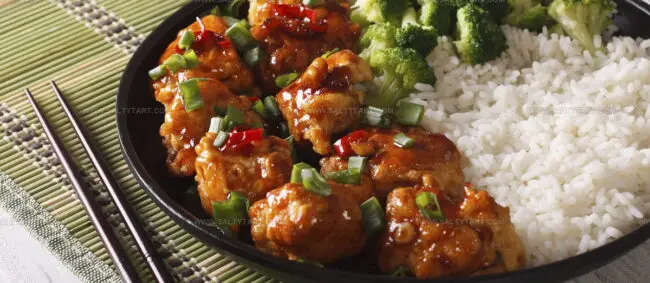
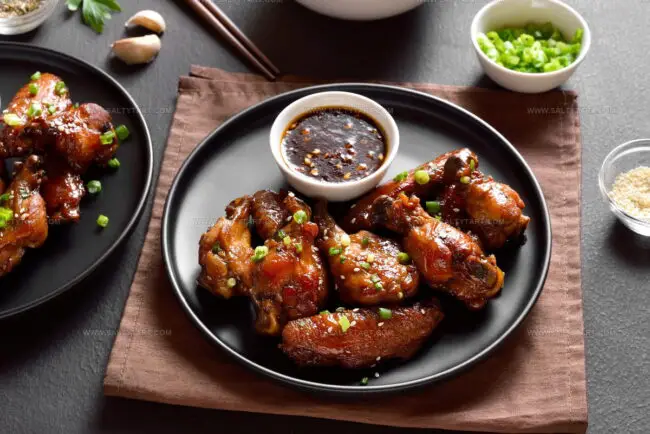
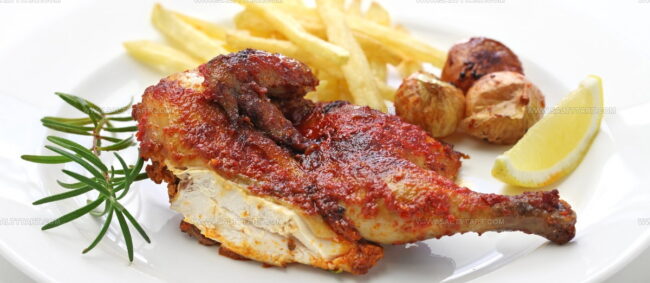
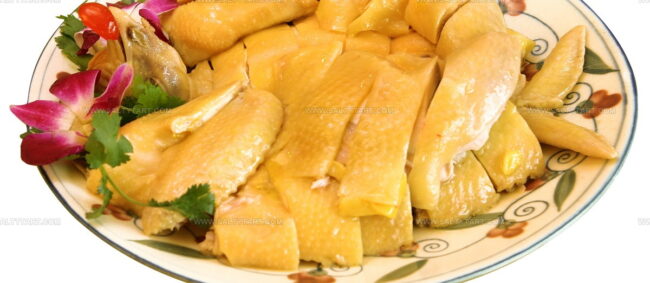
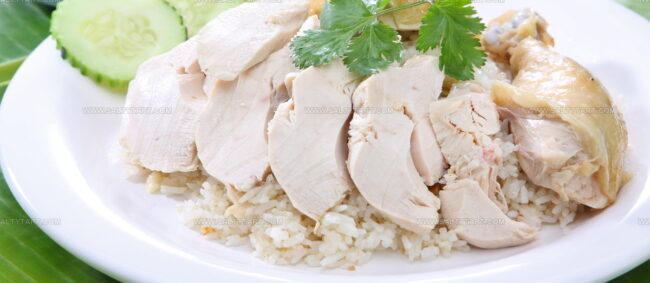
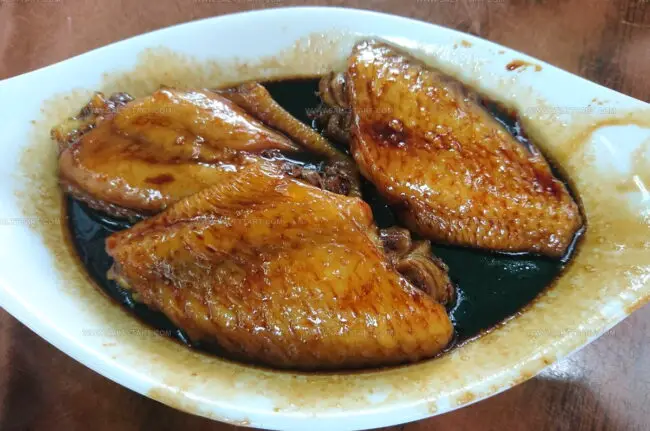
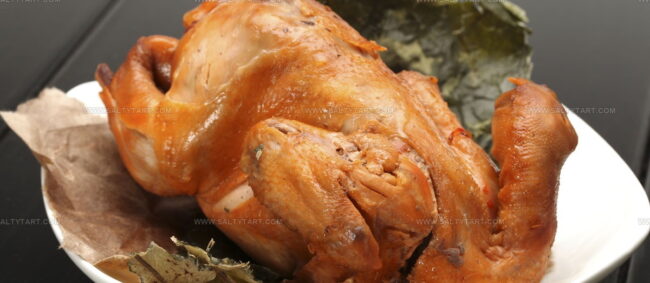
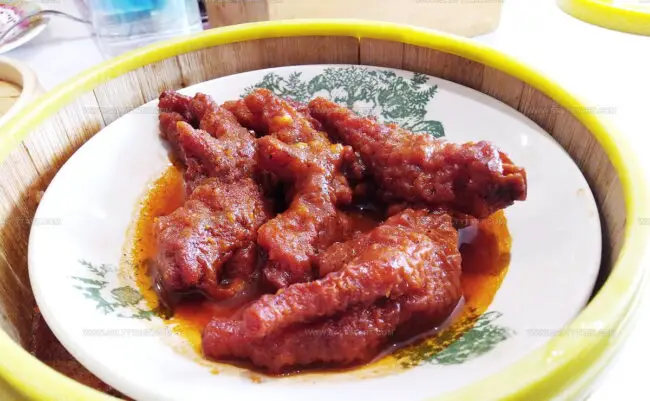
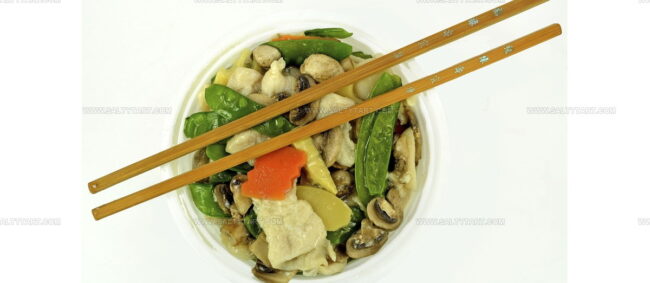
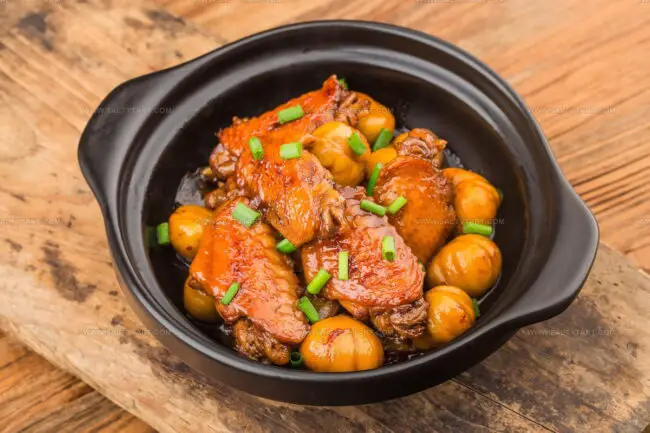
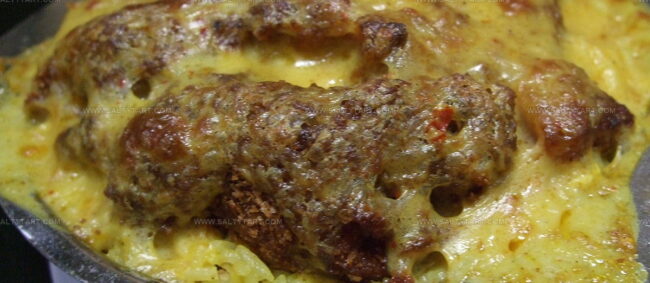

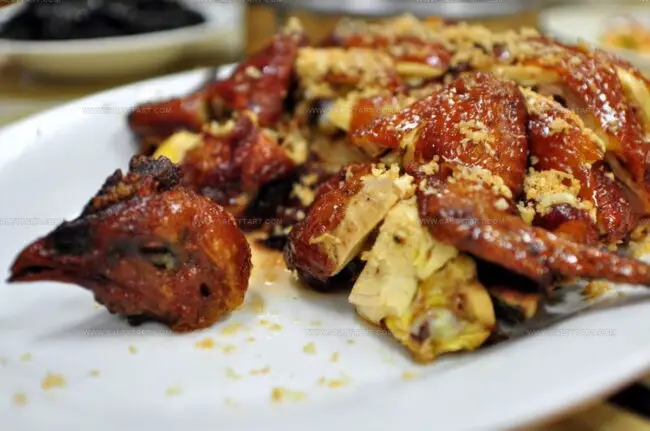
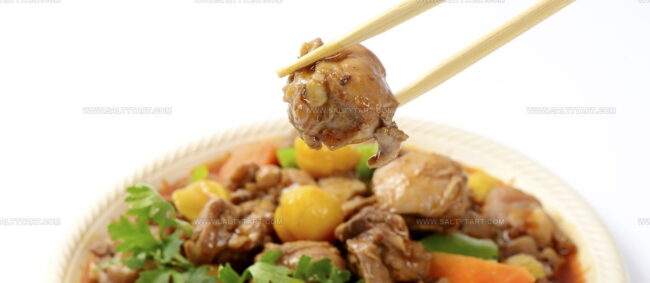
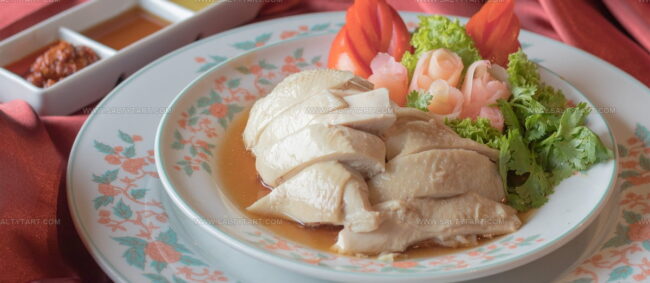

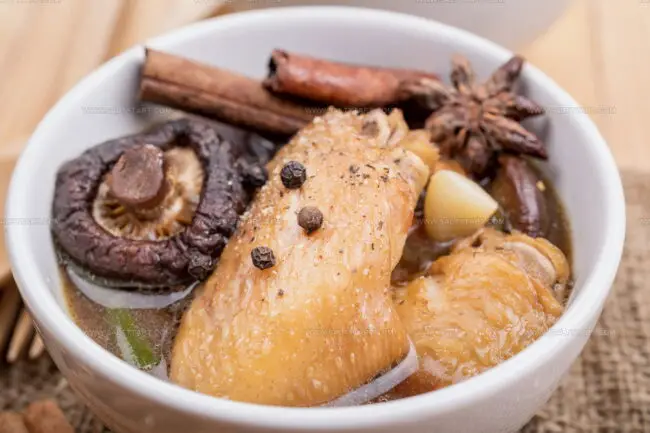


Jess Martinez
Contributing Recipe Writer & Nutrition Consultant
Expertise
Southwestern and Latin American cooking, Nutritional analysis and healthy recipe planning, Cultural food traditions, Modifying traditional dishes for better health
Education
Santa Fe Community College
Certificate in Culinary Arts
Focused on mastering the flavors and cooking methods of traditional Southwestern cuisine.
Jess’s love for bold, homegrown flavors led her straight into the world of Southwestern cooking and cultural nutrition.
After completing her Certificate in Culinary Arts at Santa Fe Community College, she made it her mission to show that good-for-you food can still taste incredible.
At saltytart.com, Jess shares vibrant, health-conscious recipes with roots in tradition but a fresh, modern twist. When she’s not testing new recipes, you’ll find her at local growers’ markets, tending her herb garden, or digging into food history books.